#sudarium
Explore tagged Tumblr posts
Text
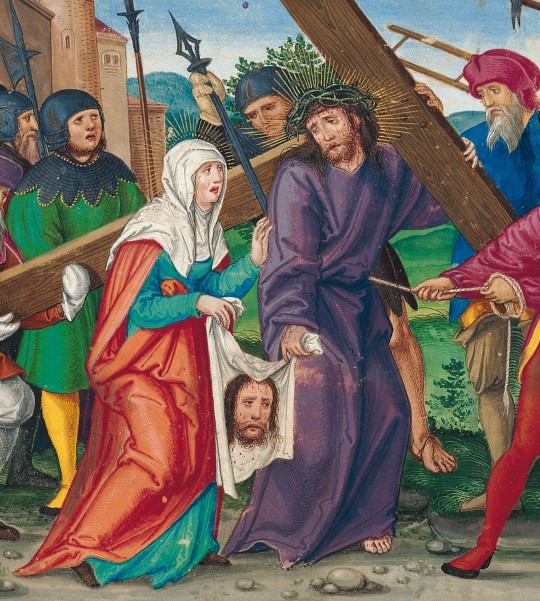
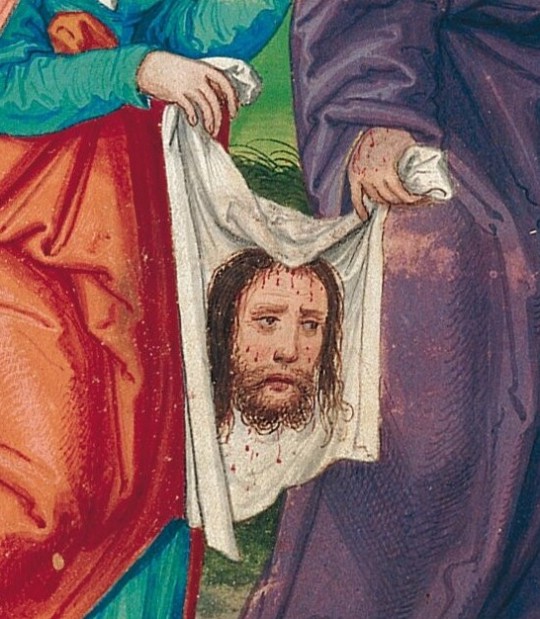
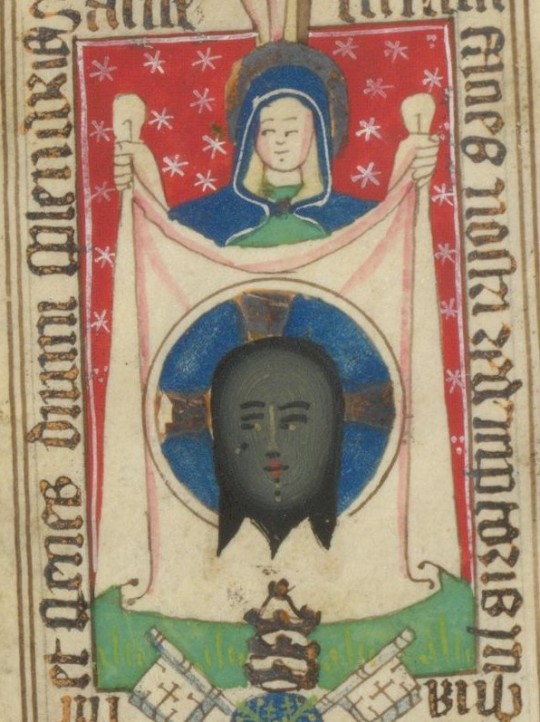
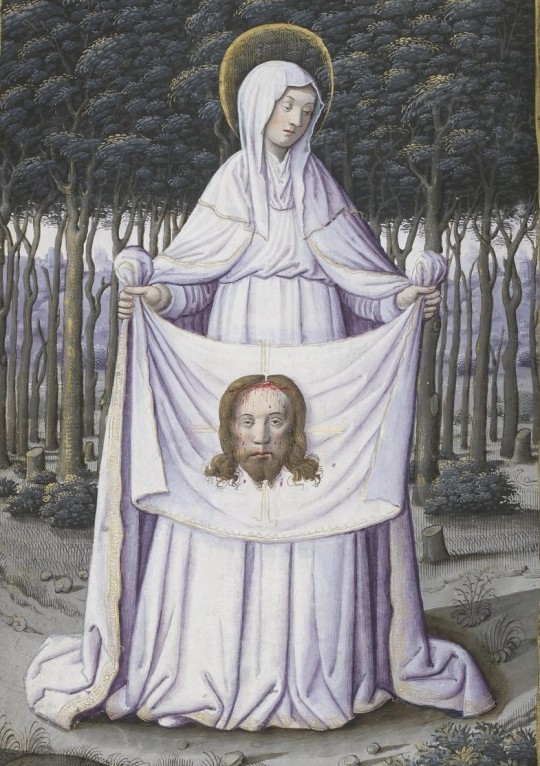
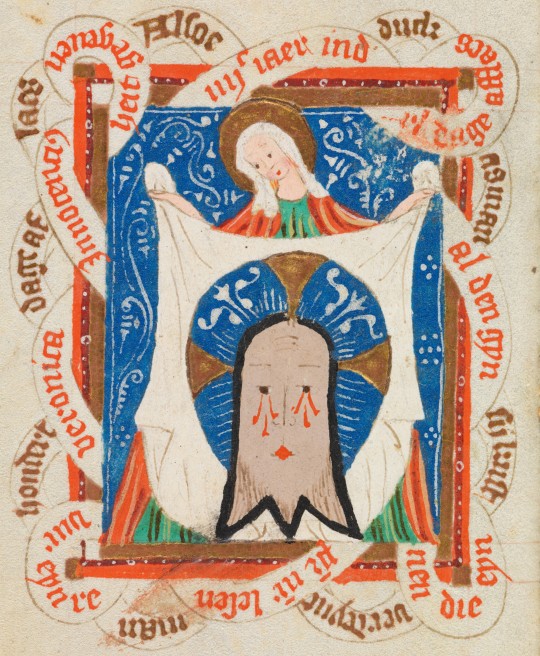
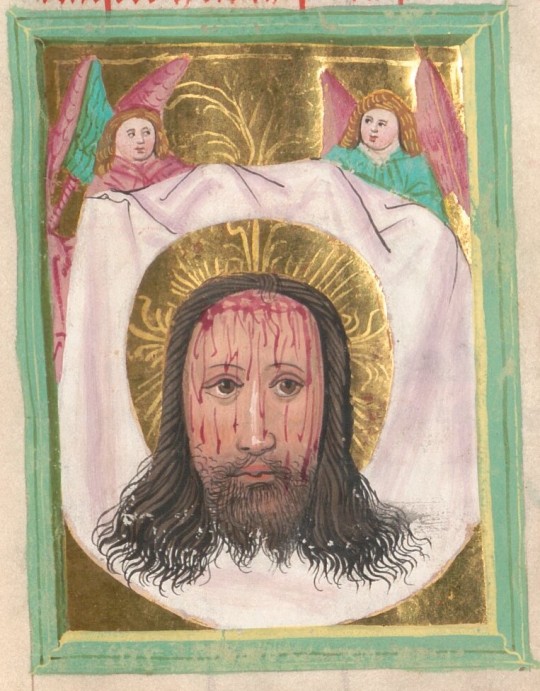
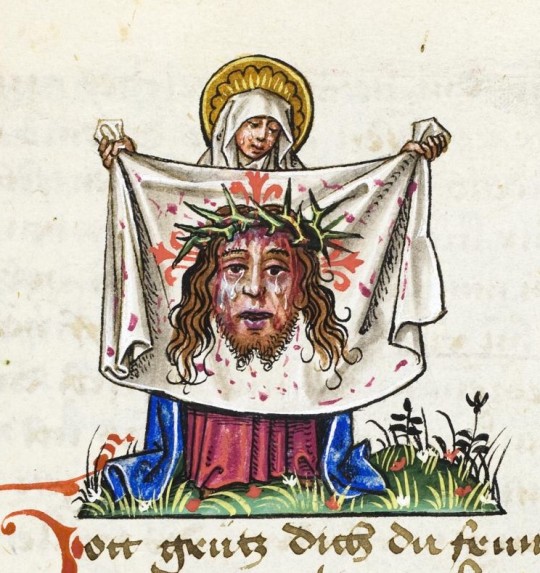
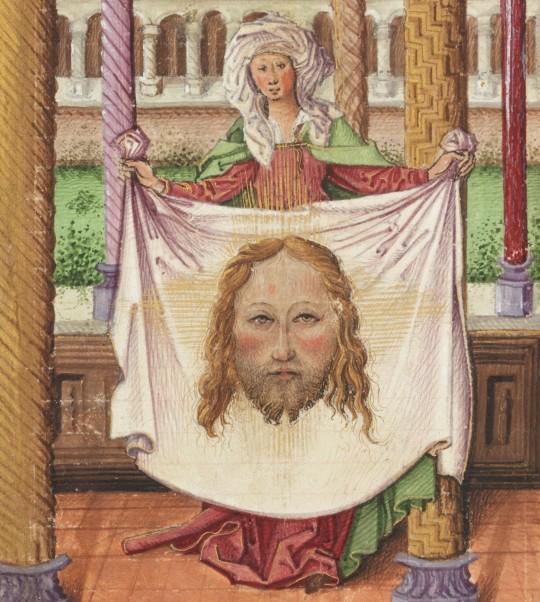
the face of jesus on veronica's veil
15th and 16th century manuscripts illustrations
sources: Munich, BSB, Cgm 8010(2, fol. 68v // Karlsruhe, BLB, Cod. Karlsruhe 439, fol. 1v // Paris, BnF, Latin 1171, fol. 70v // Lausanne, Bibl. cantonale et universitaire, TP 2858, fol. 110v // Munich, BSB, Cgm 7251, fol. 231r // Karlsruhe, BLB, Cod. Donaueschingen 106, fol. 69r // Hermetschwil, Benediktinerinnenkloster, Cod. membr. 35, fol. 73v
#15th century#16th century#veronica#st veronica#saints#sudarium#veil of veronica#holy face of jesus#christian iconography#medieval art
873 notes
·
View notes
Text

Sudarium
Velo di Santa Veronica.
4 notes
·
View notes
Note
Do you know why does Octavius in the movies have that yellow thing round his neck? is it like an extra layer beneath the armor? I need to know for my fic thanks!
just skimmed some photos of octavius because i forgot what he looks like in canon lmao but if you’re referring to what i think you are then it’s probably a focale :] it’s a scarf worn beneath the cuirass / armour to stop it from chafing the skin
#you can also call it a sudarium if you are feeling fancy#i hope that’s what you were talking about. i couldn’t find a picture where i could see his getup very clearly#also good luck with your fic !!
2 notes
·
View notes
Text
Word List: Grave

beautiful words with "grave" for your next poem/story
Gravecloth - sudarium, i.e., a linen square carried by the upper classes in Roman times (as for wiping perspiration from the face); handkerchief; an image of the face of Christ painted on a cloth and used as an aid to devotion
Graveclothes - the clothes in which a dead person is buried
Gravedo - archaic: cold in the head
Graveless - not buried; not requiring graves; deathless
Gravelrash - abrasion of the skin by gravel or other rough surface
Gravelroot - marsh milkweed; horse balm
Gravelweed - an American herb (Verbesina helianthoides); bush honeysuckle
Graveolence - obsolete: a strong and offensive smell
Graveside - the area beside a grave
Gravestone - a burial monument
Gravette - a small sharp prehistoric flint tool consisting of a blade like that of a knife with a very sharp point, a straight back, and a groove following one entire margin
Graveward - toward or directed toward the grave
Ingravescence - the state of becoming progressively more severe
Intergrave - to grave or carve between; engrave in alternate parts
Ungrave - to dig up; disinter
If any of these words inspire your writing, do tag me or send me a link. I'd love to read your work!
More: Word Lists
#word list#grave#writing reference#spilled ink#dark academia#writeblr#langblr#words#linguistics#light academia#writing inspiration#writing ideas#creative writing#literature#writers on tumblr#writing prompt#poets on tumblr#poetry#jacob van ruisdael#writing resources
150 notes
·
View notes
Text
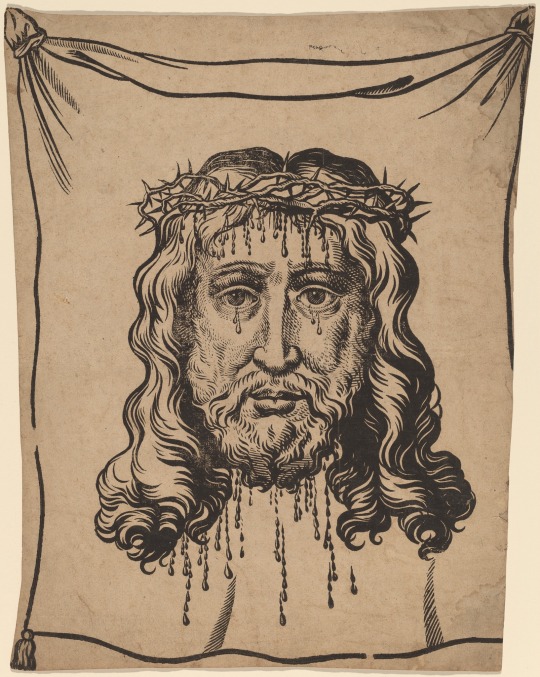
“THE SUDARIUM” ANTHONIS SALLAERT – XVII CENTURY [woodcut in black on paper | 37.2 x 27.5 cm.]
336 notes
·
View notes
Text
Dic nobis Maria, quid vidisti in via?
Sepulcrum Christi viventis, et gloriam vidi resurgentis
Angelicos testes, sudarium, et vestes.
Surrexit Christus spes mea: praecedet suos [vos] in Galilaeam.
—-
Tell us, Mary, what did you see on the way?
"I saw the tomb of the living Christ and the glory of his rising,
The angelic witnesses, the shroud, and the clothes."
"Christ my hope is arisen; he will go before his own [you] into Galilee."
17 notes
·
View notes
Text

The DNA Mystery in Eucharistic Miracles
Throughout history, reports of Eucharistic miracles have fascinated both believers and scientists. In several cases, consecrated hosts—believed to be transformed into the Body of Christ—have exhibited human flesh and blood. Recent scientific studies have provided astonishing findings that continue to fuel discussion between faith and science.
One of the most compelling discoveries is the presence of human heart tissue in multiple Eucharistic miracles, including those in Lanciano (Italy), Buenos Aires (Argentina), and Tixtla (Mexico). Scientists, including forensic pathologists, have identified this tissue as coming from the left ventricle of the heart, specifically from a person who experienced extreme distress—a finding eerily consistent with the suffering of Jesus during the Crucifixion.
Another remarkable detail is that the blood type found in these miracles is AB-positive, the same as that discovered on the Shroud of Turin and the Sudarium of Oviedo (a cloth believed to have covered Jesus' face). This blood type is rare worldwide but is most common among Middle Eastern and Jewish populations, aligning with the historical origins of Jesus Christ.
Perhaps the greatest mystery is that while human DNA has been detected, scientists have never been able to extract a full genetic profile. Normally, a full DNA sequence requires both paternal and maternal contributions, yet in these samples, the expected paternal markers remain absent. Some believers see this as a profound sign of Jesus' divine conception, while sceptics argue that the results remain unexplained.
Regardless of one’s perspective, the scientific evidence surrounding Eucharistic miracles is both fascinating and mysterious, leaving us with more questions than answers. Do these findings confirm the miraculous, or do they point to an unknown natural phenomenon? The debate continues, but one thing is certain—science and faith continue to intersect in surprising ways.
#jesus christ#EucharisticMiracles#Faith And Science#DNA#Real Presence#eucharist#catholic#orthodox#jesus
4 notes
·
View notes
Text
“Not only was there the shroud, intact and collapsed flatter than a cheese soufflé. There was also the face-cloth, set aside. Some exegetes read this verse to mean that the sudarium, or sweat-cloth, that covered the Holy Face was not folded and set aside, outside the strips of cloth, but that it remained inside the shroud, at face level. It seems to me that this interpretation, like some very lofty symbolic interpretations, serves to provide an excellent excuse for not helping with the household chores. It leaves us at the wondrous disappearance, without thinking of what is even still more woundrous, namely, that the first thing the Risen Lord did was to fold and carefully arrange his face-cloth like a napkin after dinner […]
You will probably say that I'm exaggerating. Some want everything to amount to the coarseness of grand spectacle, or a demonstration of power. This is because they probably have not advanced far enough into the mysticism of housekeeping. For what is more in the image of God, along the lines that we have just seen, than keeping house? I will sweep away the house of Jeroboam, as a man sweeps away dung until it is all gone, says the Lord through the mouth of the prophet Ahijah (1 Kgs 14:10). And Jesus clears his threshing floor (cf. Mt 3:12), drives the merchants out of the Temple, and washes the feet of his disciples.”
— Fabrice Hadjadj: The Resurrection [Résurrection, mode d’emploi; transl. Michael J. Miller]
11 notes
·
View notes
Text
The Turin shroud and Leonardo da Vinci
There is a interesting thory that says Leonardo da Vinci made the image on the Shroud of Turin, this thory was published in the book below and on a Channel 5 documentary Turin Shroud: How Da Vinci Fooled History.

TURIN SHROUD: How Leonardo da Vinci Fooled History COMPLETELY REVISED AND UPDATED
By the authors of The Templar Revelation Lynn Picknett and Clive Prince
OK let's say leonado did do it, how did he do it, baring in mind there is no paint or other pigments on the cloth and other methods were not available in the medieval period or leonados's day, also what ever made the image, created a negative, 3d imagee this only stained the fist layer of material on the cloth.
So far, the Turin shroud has been dated to two dates so far. The first date was medieval, and the second dated it to the 1st century.
Other tests done on the cloth have shown that the cloth is consistent with 1st century weaving techniques.
The mystery of how the turin shroud was made brings up an interesting fact, someone once offered lots of money to anyone who could solve the mystery of how it was made so far no one has ever come forward with a plausible method, to say how the shroud was made, and no one has ever come up with a plausible method of how the shroud was made so if you can think of a way the shroud was made you could be getting a llot of money.
The shroud is also well documented, including the fact that it was in a fire, and you can clearly see burn marks running down the sides of the shroud.
Also, the theory that Leonardo da Vinci may have made the shroud can not be tested as there is no evidence that Leonardo da Vinci did create the Shroud of Turin even, though he could if he wanted to as he was a genius, but he didn't, if he did, he would have written the fact in his journal which he wrote everything he did in, plus he had nothing to fear in doing so as no one could read it until now as he used a type of code in the form of mirror writing.
Plus, if we go on the first date, which was obtained through carbon dating, the results indicated that it was made in the Middle Ages, between 1260 and 1390 (on a side note these results have now been challenged as we now have a result of 1st century)
The earliest known record of the shroud is on a commemorative medallion from the mid-14th century, long before leonado was born.
The idea that da Vinci created the shroud was popularized by the 2009 Channel 5 documentary Turin Shroud: How Da Vinci Fooled History, the documentary claimed that da Vinci used a camera obscura and a sculpture of his own head to project his face onto the shroud. However, other researchers have dismissed the documentary's findings. as i said already, this theory can not be tested, and it is not a mainstream academic view, as it goes into a more fringe and psudo history type of area,
Also, the shroud is not just an image of a face it is an image of a whole body front and back showing the perfect anatomy of the human body, of course, this may back up the views of the authors who say leonado da Vinci did it as he was a master of anatomy of the human body on the other hand they mentioned that leonado da Vinci used only a head sculpture to make the image Implying that the authors of book marking these claims that leonado da Vinci made the shroud are unaware that the shroud shows the whole body.
This brings up the idea that the authors know nothing about the subject they are debunking. otherwise, they would know what the shroud looks like.
Interestingly enough, there is another shroud called the Veil of Veronica, or the Sudarium that just shows the face of Jesus, but this is not the turin shroud and should not be confused with it
When Jesus's was. buried they may have used two different shrouds, the Veil of Veronica which maybe just went over rhe face and the Turin shroud which went over the whole body so what ever made the image on the turin shroud may have went through another shroud that covered the face to get there, this may have been the Veil of Veronica, or the Sudarium I don't know.
This probably accounts for the confusion in shroud accounts because people think the two. Shrouds already mentioned are the sane shroud and think there is an error or inconsistency in the accounts of the shroud, but really, they are just talking about two different shrouds.
To add to the confusion there is also something called the Sudarium of Oviedo, which does not have a image on it but again this is not the turin shroud and should not be confused as the turin shroud,
(At this point, I am not sure which face shroud they used, but I do know that either of them are the turin shroud).
The earliest historical records of the shroud place it in Lirey, France, 1350s. A French knight named Geoffroi de Charny is said to have presented the shroud to the dean of the church in Lirey as Jesus' burial shroud. As I have said before, the shroud is well documented
Also, as i haave already mentioned we now have a new result that says the shroud dates back to the 1st century, probably due to an error in dating the shroud, the first time as they probably dated medieval contamination or a medieval repair not the shroud itself.
Conclusion
The theory that Leonardo da Vinci made the shroud is fake news and should not be taken seriously, also judging by their other book. The authors of this book that started this theory should not be taken seriously either, as The Templar Revelation is the book that the Dan Brown's the da Vinci code is based on. Both the da Vinci code and the Templar Revelation books are based on fringe theory, otherwise known as psudo historical views, which mainstream historians and academics have rejected and debunked many times.
More on the subject.
The Turin shroud and Leonardo da Vinci
Turin shroud analysis:
Jesus from academic and historical points of view
Jesus and the Turin shroud
Other References:
The Templar Revelation - Wikipedia
Lynn Picknett - Wikipedia
Sudarium of Oviedo -Wikipedia
Veil of Veronica - Wikipedia
Shroud of Turin - Wikipedia
Leonardo da Vinci - Wikipedia
TURIN SHROUD: How Leonardo da Vinci Fooled History
3 notes
·
View notes
Text
TPDR — An Iconic Line: Claude Mellan’s The Sudarium of Saint Veronica (1649)
Claude Mellan: born into a family of coppersmiths and trained in Rome.
0 notes
Text


The Sudarium of Saint Veronica 1649, Claude Mellan (1598-1688)
0 notes
Video
youtube
New EVIDENCE: Head Cloth of Jesus FOUND? The Sudarium of Oviedo | Michae...
0 notes
Photo


This image was made with a single line. Born into a family of coppersmiths in northern France, Claude Mellan (1598--1688) trained in Rome with the painter Simon Vouet, before creating his pièce de résistance in 1649.
(vía An Iconic Line: Claude Mellan’s *The Sudarium of Saint Veronica* (1649) – The Public Domain Review)
134 notes
·
View notes
Text

Philip Galle, after Jan Van der Straet, Three Angels adoring the Sudarium, etching, ca. 1580
19 notes
·
View notes
Photo

From the Master of St. Ursula, the Holy Face
81 notes
·
View notes
